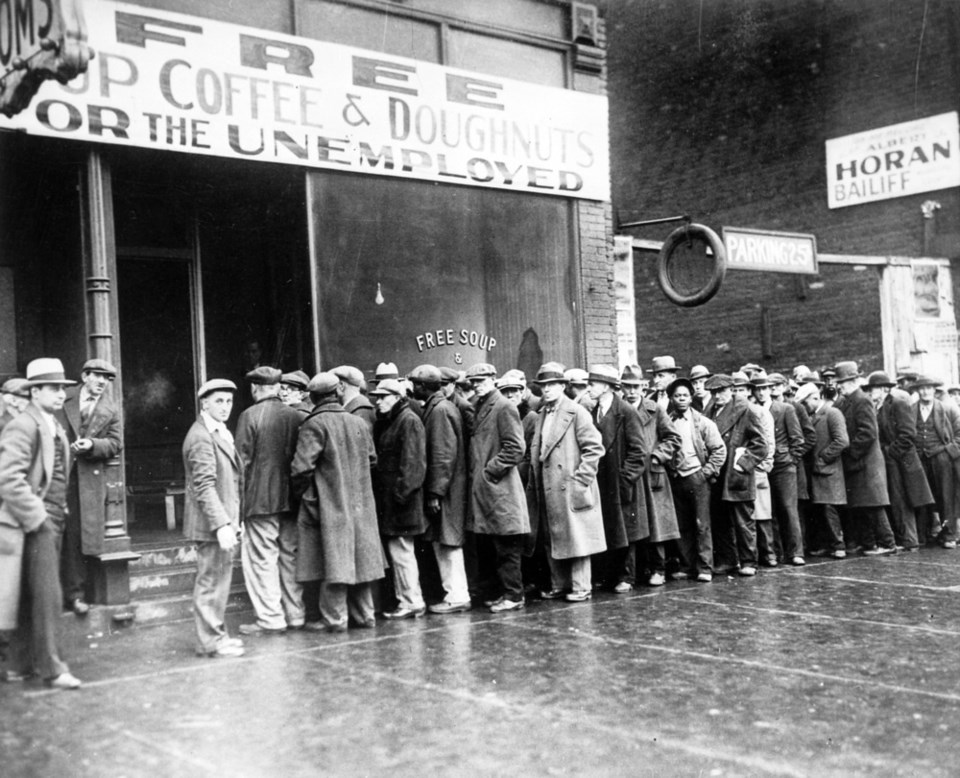They called it an economic contraction, spurred by an energy crisis. There was dramatic employment decline, massive layoffs, and unemployment grew by 3.5 million, reaching the highest recorded since the post-World War II period.
Men were affected the most, but none went unscathed. Discouraged workers lost hope, though an expanding economy seemed to be on the rise, according to Employment and Unemployment during 1975, a scholarly paper that appeared in the Monthly Labor Review in 1976.
Nearly 45 years later, we’ve surpassed this previous high. Nearly 22 million people have filed for unemployment in the past month, 5.2 million in the last week, according to multiple reports. Food banks and pantries are seeing this increase in the rising number of new clients seeking food. North Texas Food Bank recently reported a 50 to 70 percent increase in new clients since the COVID-19 pandemic started. Many of them are showing up at 4 a.m. to line up for food.
On Friday, Gov. Greg Abbott will release details on how he plans to jump start the Texas economy during the coronavirus outbreak. “This is not going to be a ‘rush the gates, everybody is able to suddenly return to work all at once,” Abbott said at a press conference Monday.
It’s unclear what those details will entail. President Donald Trump announced Thursday that he is leaving up to the states to decide how and when they’re going to reopen. He also unveiled the three-phase plan “Opening Up America Again” as kind of blue print for governors to follow. He didn’t give a time line of when governors should implement it, but said it would be a “gradual process.”
The first phase allows large venues like movie theaters, restaurants, and megachurches to reopen under certain conditions, including strict physical distancing protocols. Gyms will be allowed to reopen if they follow those same conditions. Elective surgeries will resume.
But you won’t be able to visit the hospital or senior living facilities.
The second phase allows large venues to ease physical distancing restrictions and reopens daycare centers, schools, and summer camp. Nonessential travel will be allowed, but not visits to hospitals and senior living facilities.
Trump’s final phase is a return to economic nirvana with some restrictions. Large venues are allowed to operate under limited social distancing protocols. At-risk health individuals can return to public life as long as they practice social distancing, and low-risk health individuals ought to consider limiting their time in large gatherings.
To implement Trump’s guidelines, states have to show a downward trajectory in documented COVID-19 cases.
Trump initiated these guidelines in response to the skyrocketing unemployment. In late March, the number of people on unemployment was 8.2 million, an increase of 4.7 million from the previous week. Only 1.8 million people were on unemployment in March 2019, according to the Labor Department.
At a press conference in late March, Trump claimed continued business closures could cause more death than COVID-19. “We can’t have the cure be worse than the problem,” he said. “We have to open our country because that causes problems that, in my opinion, could be far bigger problems.”
Trump’s claim led county and city officials like Collin County Judge Chris Hill to resist closing nonessential businesses and claim all businesses are essential to the county’s financial health. He’s since backed away from the claim and is instead relying on Gov. Abbott’s public health executive orders.
COVID-19 does seem to be worse in urban areas than rural areas, which are slowly reporting cases. And when it’s not infecting your friends, loved ones, or neighbors, it can be hard to understand why city officials like McKinney Mayor George Fuller want to keep nonessential businesses close.
The lack of wide-scale testing is making it impossible to track the virus or understand the full scope of its spread. Less than 3,500 tests have been given in Collin County alone. More than 500 people have tested positive for the virus, Fuller pointed out in a April 16 Facebook post.
That’s about 15 percent of those tested. There are more than 1 million people in Collin County who still haven’t been tested.
Gov. Abbott’s press conference takes place Friday at noon.




